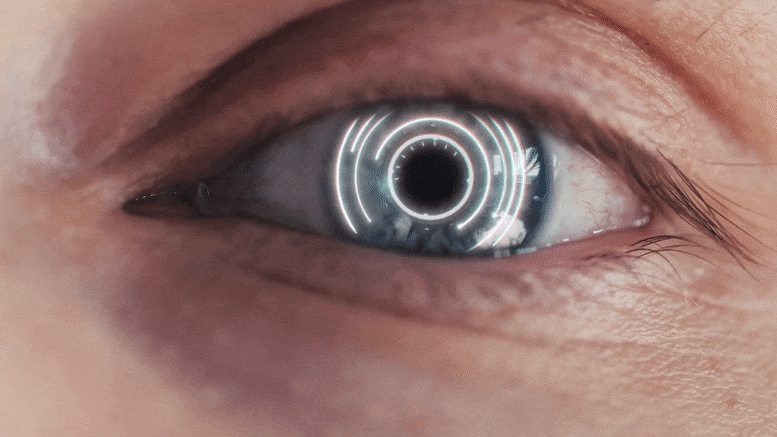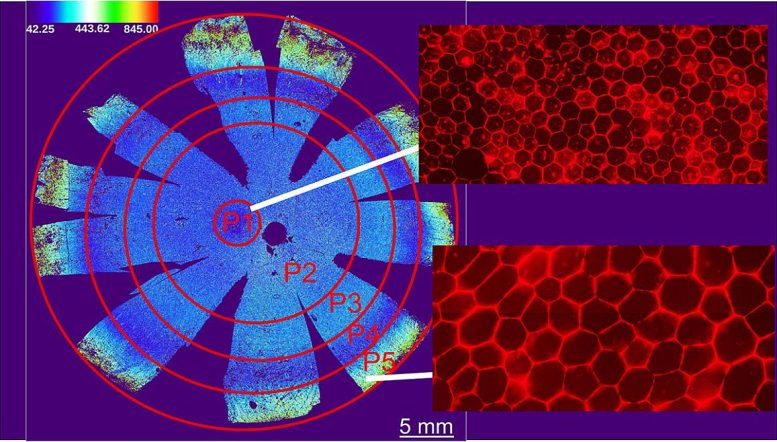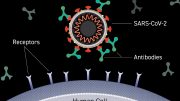
Using artificial intelligence, researchers created a detailed map of retinal pigment epithelium (RPE) subpopulations at single-cell resolution. This framework aids in understanding RPE cells’ vulnerability to retinal diseases and developing targeted therapies, enabling more precise treatments for degenerative eye diseases.
NIH discovery sheds light on tissue targeted by age-related macular degeneration and other diseases
Researchers have identified distinct differences among the cells comprising a tissue in the retina that is vital to human visual perception. The scientists from the National Eye Institute (NEI) discovered five subpopulations of retinal pigment epithelium (RPE)—a layer of tissue that nourishes and supports the retina’s light-sensing photoreceptors. Using artificial intelligence, the researchers analyzed images of RPE at single-cell resolution to create a reference map that locates each subpopulation within the eye. A report on the research was published on May 6, 2022, in Proceedings of the National Academy of Sciences.
“These results provide a first-of-its-kind framework for understanding different RPE cell subpopulations and their vulnerability to retinal diseases, and for developing targeted therapies to treat them,” said Michael F. Chiang, M.D., director of the NEI, part of the National Institutes of Health.
“The findings will help us develop more precise cell and gene therapies for specific degenerative eye diseases,” said the study’s lead investigator, Kapil Bharti, Ph.D., who directs the NEI Ocular and Stem Cell Translational Research Section.

Using artificial intelligence, the researchers analyzed RPE from nine donor and identified five subpopulations of RPE. These populations are along a spectrum in terms of cell area, aspect ratio, hexagonality and number of neighbors. Foveal RPE (P1) required for central vision tend to be perfect hexagons and are tightly packed together. Peripheral RPE (P5) are less perfect hexagons and are more spread out. Credit: Davide Ortolan, Ph.D.
When light hits the rod and cone photoreceptors that line the retina at the back of the eye, vision begins. Once triggered, photoreceptors transmit signals via a complicated network of other retinal neurons that converge at the optic nerve before proceeding to other brain regions. The RPE is a monolayer that resides one cell deep underneath the photoreceptors.
Age and illness may trigger metabolic alterations in RPE cells, which can contribute to photoreceptor degradation. The effect of these RPE changes on vision varies greatly depending on the severity and location of the RPE cells within the retina. Late-onset retinal degeneration (L-ORD), for example, mostly affects the peripheral retina and hence peripheral vision. Age-related macular degeneration (AMD), a leading cause of visual loss, predominantly damages RPE cells in the macula, which are essential for central vision.
Bharti and colleagues sought to determine if there are different RPE subpopulations that might explain the wide spectrum of retinal disease phenotypes.
Scientists explain more about RPE and what the single-cell resolution map shows. Credit: National Eye Institute
The team used artificial intelligence (AI) to analyze RPE cell morphometry, the external shape and dimensions of each cell. They trained a computer using fluorescently labeled images of RPE to analyze the entire human RPE monolayer from nine cadaver donors with no history of significant eye disease.
Morphometry features were calculated for each RPE cell – on average, about 2.8 million cells per donor; 47.6 million cells were analyzed in total. The algorithm assessed each cell’s area, aspect ratio (width to height), hexagonality, and number of neighbors. Previous studies had suggested that RPE function is tied to the tightness of cellular junctions; the more crowded, the better for indicating cellular health.
They identified five unique RPE cell subpopulations, classified as P1-P5, based on morphometry and grouped them in concentric rings around the fovea, which is the center of the macula and the most light-sensitive area of the retina. When compared to peripheral RPE, foveal RPE is perfectly hexagonal and more compactly situated, with a greater number of neighboring cells.
Unexpectedly, they discovered that the peripheral retina contains a ring of RPE cells (P4) with a cell area very similar to RPE in and around the macula.
“The presence of the P4 subpopulation highlights the diversity within retinal periphery, suggesting that there could be functional differences among RPE that we are currently unaware of,” said the study’s first author, Davide Ortolan, Ph.D. a research fellow in the NEI Ocular and Stem Cell Translational Research Section. “Future studies are needed to help us understand the role of this subpopulation.”
Next, they analyzed RPE from cadavers with AMD. Foveal (P1) RPE tended to be absent due to disease damage, and the differences among cells in the P2-P5 subpopulations were not statistically significant. Overall, the AMD RPE subpopulations tended to be elongated relative to RPE cells not affected by AMD.
To further test the hypothesis that different retinal degenerations affect specific RPE subpopulations, they analyzed ultrawide-field fundus autofluorescence images from patients affected by choroideremia, L-ORD, or a retinal degeneration with no identified molecular cause. While these studies were conducted at a single point in time, they still demonstrated that different RPE subpopulations are vulnerable to different types of retinal degenerative diseases.
“Overall, the results suggest that AI can detect changes of RPE cell morphometry prior to the development of visibly apparent degeneration,” said Ortolan.
Age-related morphometric changes also may appear in some RPE subpopulations before they’re detectable in others. These finding will help inform future studies using noninvasive imaging technologies, such as adaptive optics, which resolve retinal cells in unprecedented detail and could potentially be used to predict changes in RPE health in living patients.
Reference: “Single-cell–resolution map of human retinal pigment epithelium helps discover subpopulations with differential disease sensitivity” by Ortolan D, Sharma R, Volkov A, Maminishkis A, Hotaling NA, Huryn LA, Cukras C, Di Marco S, Bisti S and Bharti K, 6 May 2022, Proceedings of the National Academy of Sciences.
DOI: 10.1073/pnas.2117553119
The study was funded by the NEI Intramural Research Program.









Be the first to comment on "Using AI To Cure Blinding Eye Diseases"